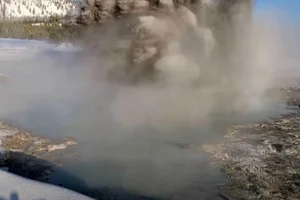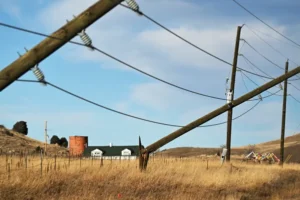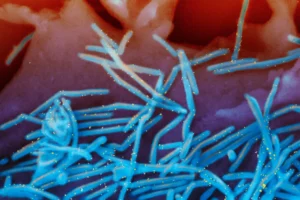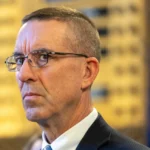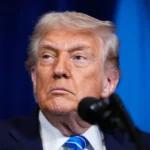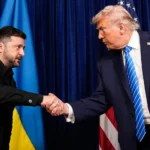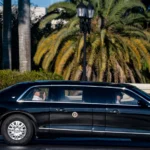University of Wyoming President Reflects on First Two Years in Laramie
Ed Seidel explains decision to come to Wyoming, how COVID impacted his early days on campus and challenges facing the university (Part 1)
- Published In: Other News & Features
- Last Updated: Oct 21, 2022
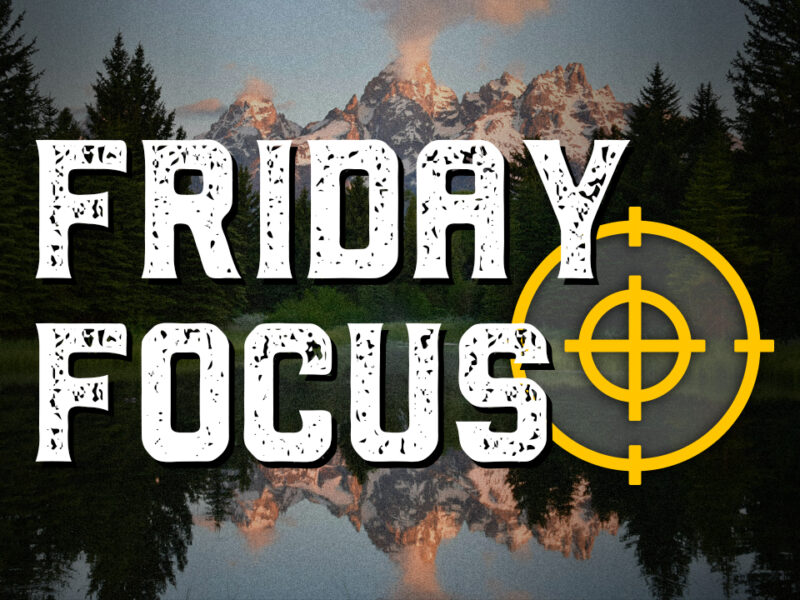
By Kaycee Clark-Mellott
Special to the Wyoming Truth
LARAMIE, Wyo.— President Ed Seidel arrived at the University of Wyoming in 2020 amid the COVID-19 pandemic, budget cuts and an online workplace. The timing was less than ideal. But Seidel persisted through the challenges and is now leading the charge to transform UW into a nationally recognized research institution.
Seidel, 65, was raised and educated on the East Coast, where he earned a doctorate in relativistic astrophysics from Yale University. In the early 1990s, he taught physics and astronomy at the University of Illinois. Seidel also was Founding Director of the Center for Computation and Technology at Louisiana State University and Senior Vice President for Research and Innovation at the Skolkovo Institute of Science and Technology in Moscow.
Prior to joining UW, Seidel served in a myriad of leadership positions within the University of Illinois System, including Vice President for Economic Development and Innovation.
In Laramie, Seidel is joined by his partner, Gabrielle Allen, UW’s Director of the School of Computing.
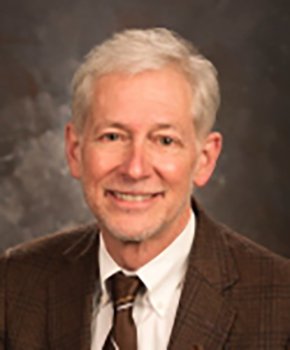
The Wyoming Truth spoke with Seidel about his decision to come to Wyoming and ambitious agenda for UW. What follows are excerpts from part one of the interview; part two will be published tomorrow.
What attracted you to UW?
Seidel: There’s a lot that drew me into this job. I’ve been vice president at a couple of universities around research or economic development, and I’ve had a lot of experience in different places. I felt like I was ready to take on the leadership role of the university.
So, when this job opened up, it had a lot for me. It had the fact that it’s land grant public university with the mission of transforming people’s lives, that speaks deeply to my core values. Also, it was in the West, which I liked since I’d never lived in the West. I just love the kind of culture, the outdoors and activities that the state is well known for, so that was attractive to me. The fact that it’s the only university in the state makes it unique among university systems in the country. I think that there’s one university and that has so much impact on the state.
How would you assess your first two years here?
Seidel: Well, I think anybody who started a presidency on July 1st, 2020, is never going to forget what came at them. I was down in Denver recently for a conference that Michelle Marks, President of the University of Colorado-Denver, hosted about the incredible challenges that we faced. Even during the interview process, which was in February, it wasn’t clear that we were going to be in that kind of a situation. Then low and behold, I started, and I had the COVID pandemic to deal with and a big budget cut to deal with in an institution that I was just getting to know.
If I could sum it all up in one phrase, I feel like I at least tried to provide steady leadership through all of the turmoil that was created by those external events that really hit the state. I try to be very science based in decisions around COVID, and I try to be extremely strategic in changes that we made to the university to address not only the budget shortfalls, but to position us for future growth around bringing in new revenue streams to the university.
I have a lot of experience in both the economic development and research side and the fundraising side [of universities]. I want to fight, of course, always for state funding. But we’ve just got to diversify our ability to bring in additional funds. It also really matters what areas you invest in, not only for what funds you can bring in, but for what students are going to experience.
What was it like trying to manage the pandemic on campus?
Seidel: The biggest drawback of that, aside from the funding difficulties and having to make changes to the university, was just that it was very hard to get to know people. Therefore, not only did I not know people, but they didn’t know me. I found that the trust factor was not easily established.
Do people really have trust in the leadership of the university? For some years, before I was the sixth president in seven years, it was just like a revolving door. The difficulty for faculty, staff and students to accept whatever the new leadership was. “Is it really going to stick? What does this person really know about the state? Do I even have good instinct?”
I think [trust] is really important, and so it was really hard for me to establish that. And every time I tried, felt I just got to get out and meet people in person. Then there would be that someone was exposed to or had COVID, and so I had to go into even further isolation. Now that we’re coming out of this, some people meet me and they’re like, “You’re really different from what I thought.”
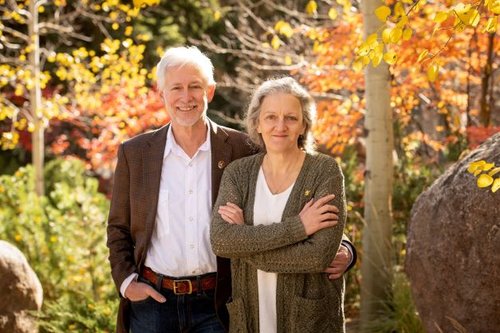
What are the three biggest challenges facing UW?
Seidel: In no order, one is adequate funding so that we can really cover the student needs here. That means both making sure that the block [grant] is sufficient and making sure that we communicate well to the legislature because they are our biggest benefactors.
Related to that, we need to diversify our revenue streams to make sure that we’re prepared. That means we have to make sure that our faculty are able to . . .be competitive for research grants that help support both undergraduates and graduate students, plus their research programs. There needs to be balance and so developing an overall financial model.
Another big challenge is improving our student success outcomes. We’re here for the students, and we want to make sure that they’re successful. We lose about 25% of our students from freshman to sophomore year. It’s better than the national average, but it’s not good enough. We’ve seen a lot of changes around student success initiatives. The Saddle-Up program, while it needs some adjustments, we realized it’s well intentioned.
The third challenge within the university is faculty excellence and faculty support. Making sure faculty are really well supported to teach their classes, but also to be supported to improve their scholarship and to grow it and bring in external funding. For example, the federal government has passed the so-called CHIPS and Science Act that completely revamps the federal funding ecosystem with a lot more emphasis on economic development, as well as potentially doubling the funding for the National Science Foundation.
There will be a lot more opportunity to receive funding for research programs at the national level. And we have to make sure that we have the faculty in the right areas, with the right sort of support structures to do that. That will impact students as well. It’s really important in terms of the faculty excellence initiatives. We’ve recently had the Board of Trustees and the [UW] Foundation both support those initiatives around student success and faculty excellence.


